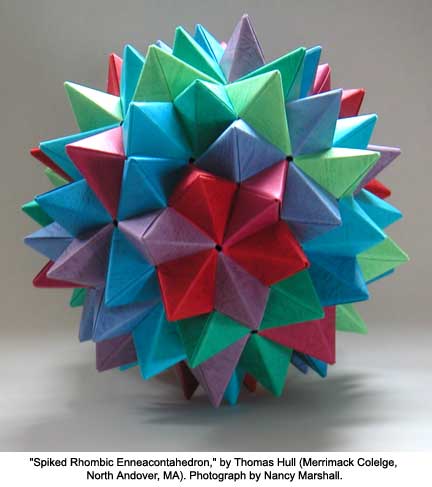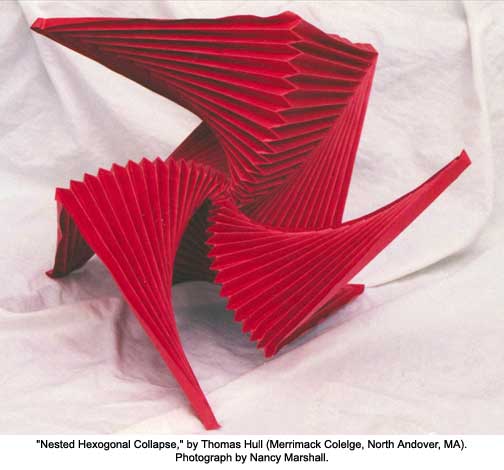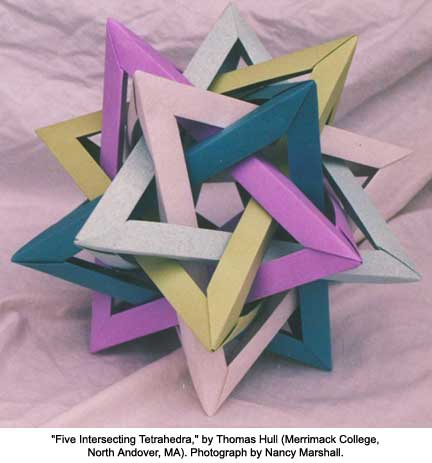
Mathematical ImageryMathematical artists create strong, stunning works in all media and explore the visualization of mathematics
The Mathematics of Origami :: Thomas Hull
My dissertation was on list coloring bipartite graphs, and I now mostly study the mathematics of origami (paper folding). My research uses graph theory, combinatorics, geometry, and other areas of math, with applications in engineering, materials science, art, and education.
— Thomas Hull (Western New England University)

This structure was conceived by taking a 90-sided polyhedron, whose faces are made from two types of rhombi, and placing a pyramid on each face. The construction uses 180 small squares of paper, all folded and interlocked together without glue. Photograph by Nancy Rose Marshall.

This model is a series of concentric hexagons with "zig-zag" creases coming from the center-most hexagon out to the midpoints of the paper's sides. It can be collapsed in many different ways and twisted into interesting shapes, as done here. Photograph by Nancy Rose Marshall.

This is a version of the Ow-Hull "Five Intersecting Tetrahedra." The visually stunning object should be a familiar sight to those who frequent the landscapes of M.C. Escher or like to thumb through geometry textbooks. Photograph by Nancy Rose Marshall.



